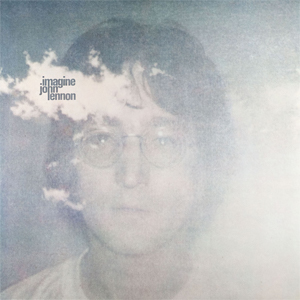Imagine there's no heaven
It's easy if you try
No hell below us
Above us only sky
Imagine all the people
Living for today...
Imagine there's no countries
It isn't hard to do
Nothing to kill or die for
And no religion too
Imagine all the people
Living life in peace...
You may say I'm a dreamer
But I'm not the only one
I hope someday you'll join us
And the world will be as one
Imagine no possessions
I wonder if you can
No need for greed or hunger
A brotherhood of man
Imagine all the people
Sharing all the world...
Imagine на John Lennon
You may say I'm a dreamer
But I'm not the only one
I hope someday you'll join us
And the world will live as one
Песента излиза в САЩ на 11 Октомври 1971, а във Великобритания чак през 75та.
Imagine е първата песен от едноименния албум на Ленън.
През 2004 'Rolling Stone Magazine' я слага на трето място в класациятата на 500те най-добри песни за всички времена, след Like a Rolling Stone на Дилън и Satisfaction на Стоунс.
Джон Ленън получава основната идея доста по-рано, и записва песента Give Peace a Chance на 1 Юни в Монреал, 1969. За Imagine споделя пред сп. Playboy през 1980, че е продлъжение на същия идеал. В този случай обаче той и Йоко не казват "дайте шанс", ами карат слушателя да си зададе въпроса дали може да си представи свят без държави и религия.
Джон е бил вдъхновен и от това тристишие:
Писано от Йоко Оно.
Не знам кога съм чул песента за пръв път, но си спомням, че ми ставаше тъжно като започнеше. След изслушването на старата касетката настроението ми винаги се променяше положително, тъй като в албума има песни като Cripped Inside, Jealous Guy, I Don't Wanna Be a Soldier, Gimme Some Truth, Oh My Love, How?, и Oh Yoko!, които винаги ме развеселяваха. Всичките десет песни ми харесваха, но заглавната беше много по-различна от абсолютно всичко друго, което бях чувал до тогава. И все още е.
Не са много на брой песните, от които ме побиват тръпки.
Още по-малко са текстовете, които ме впечатляват. С точно тази Ленънова творба сравнявам усещането за някои Класически произведения, които като малко по-голям чух.
В трети или четвърти клас имахме предмет 'Poetry', и нищо чудно, че думите от песента на Ленън се озоваха в тетрадката ми (това беше от малкото предмети, по които имахме тетрадки, всичко друго беше в binder-и, или хвърчащи листи в папка). Нищо чудно и, че не си спомням друго от заниманията по този предмет.
Въпреки че авторът казва, че Imagine е: "anti-religious, anti-nationalistic, anti-conventional, anti-capitalistic [song], but because it's sugar-coated, it's accepted."
Чувал съм изпълнения без цигулките. Има и една версия само с китара.
Не е мразил религиите, и не е искал да падат правителствата.
Рядко съм срещал музика от изпълнител, който толкова искрено и ясно е представял нещата, които му се искало да каже. След като изслушаш албума Imagine, няма как да не осъзнаеш, че този е бил точно такъв, и не го е интересувало какво мисли всеки Иван и Андрей (преди малко беше сульо и пульо) за каквото и да било. Джон Ленън е обичал да си играе с думите, както и с различните звуци.
Слушах интервю, в което Ed Bradley пита Селин Дион коя е песента, която тя би искала да е написала, и тя отговори, че тази песен е "Imagine".
Песента има много различни версии, всяка носеща свой си чар.
Сега ще ви представя някои от тези, които са ми харесали.
И не, това не е нито проповядване, нито командване, нито убеждаване. А пеене.
Има много хора, които никога не биха могли да го разберат.
Миналата година се честваха 70 години от раждането на Джон Ленън.
Няма да бъде забравена неговата най-красива песен.
"Imagine all the people
Living for today... "












